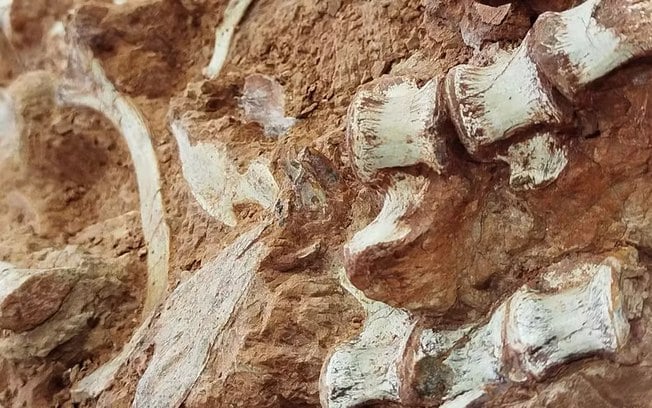researchers from the Federal University of Santa Maria (UFSM) found a partially exposed dinosaur fossil at a fossiliferous site in the interior of São João do Polêsine, located in the Central Region of Rio Grande do Sul. The discovery, attributed to the rains in May that caused floods, represents an important milestone for Brazilian paleontology.
233-million-year-old fossil
The team from the Paleontological Research Support Center of the Fourth Colony (Cappa), at UFSM, is leading the studies. According to researchers, the specimen is about 233 million years old, making it one of the oldest dinosaurs ever found.
“These fossils are fundamental for us to understand the origin of dinosaurs. This specimen, in particular, will contribute significantly to our knowledge of this early period,” said paleontologist Rodrigo Temp Müller, leader of the team.
Video
Excavation and identification process
The excavations took place over four days in late May. After removing the rock containing the fossil, the researchers found that it was an almost complete dinosaur, measuring about 2.5 meters in length.
The site where the fossil was found dates back to the Triassic period, the first of the Mesozoic Era. During this period, the ecosystem was recovering after a mass extinction, giving rise to the first dinosaurs.
“Some characteristics of the fossilized bones indicate that the material belongs to a carnivorous dinosaur of the Herrerasauridae group, known both in Brazil and in Argentina. From what we can see, this specimen is the second most complete herrerasaurid ever discovered in the world,” explained Müller.
After analysis in the laboratory, the researchers will investigate whether the specimen belongs to an already known species or if it represents a new discovery. This phase of the research should be completed later this year.
Additional discoveries and challenges
In addition to the almost complete skeleton of the dinosaur, paleontologists also found fossils of pre-mammal animals, more fragmented, in other municipalities in the region, such as Faxinal do Soturno, Agudo, Dona Francisca and Paraíso do Sul.
Impact of rainfall on paleontology
Rains that reveal new fossils can also accelerate their destruction due to the action of water, wind and sun. Smaller fossils are the most vulnerable, and can be exposed and damaged during the same rainy season.
The UFSM team is monitoring paleontological sites in the region after the floods in May, in search of exposed fragments. The work process includes:
- Discovery of the fossil: Identification of the exposed material.
- Collection: Excavation to extract the rock containing the fossil.
- Transport to the laboratory: Careful movement of the material.
- Rock extraction: Removal of the rock using hammers, scalpels and resins to ensure the integrity of the fossil.
Contribution to science
The discovery of this fossil offers a valuable opportunity to better understand the early days of dinosaurs on Earth. The research coordinated by Cappa promises to reveal new information about the evolution and behavior of these ancient beings, consolidating the importance of Brazil in the world scenario of paleontology.
